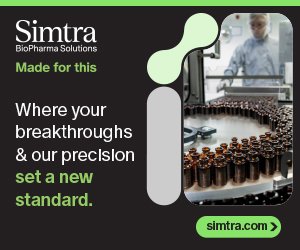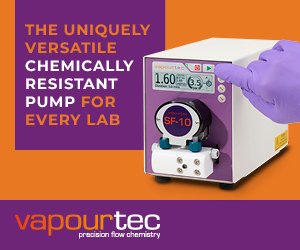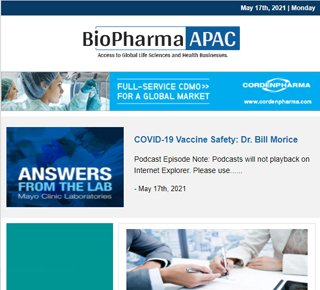In Conversation with Eugene Kang: Pioneering the Future of Cell Therapy with Thermo Fisher's CTS Detachable Dynabeads
15 November 2023 | Wednesday | News

Eugene Kang, Senior Product Manager for Cell Therapy at Thermo Fisher Scientific
In an exclusive Q&A by BioPharma APAC with Eugene Kang, Senior Product Manager for Cell Therapy at Thermo Fisher Scientific, we delve into the groundbreaking advancements of the CTS Detachable Dynabeads platform and the strategic integration of modular instruments using DeltaV™ automation software. From active release mechanisms to seamless scalability and regulatory compliance, Kang provides insights into how these innovations are shaping the future of cell therapy manufacturing.
Could you provide detail about the active release mechanism of Gibco™ CTS™ Detachable Dynabeads™ magnetic beads and how it contributes to cost savings and improved cell purity, yield, and viability in the manufacturing process?
CTS Detachable Dynabeads beads are a next-generation platform of Gibco™ CTS™ Dynabeads™ beads, with a first-of-its-kind active release mechanism that provides users with the flexibility to choose when to detach the beads from their target cells.
The base of the product is the same 4.5 μm paramagnetic, polystyrene Dynabeads beads as the legacy passive release Gibco™ CTS™ Dynabeads™ CD3/CD28 beads that launched in 2006. The difference is the state-of-the-art, proprietary active release mechanism comprising a biotin derivative and VHH antibody conjugated to the surface of the Dynabeads beads. The camelid-derived VHH short-chain antibody is specific for certain clusters of differentiation and is derived from Thermo Scientific™ CaptureSelect™ technology. This complex comes conjugated and ready to use, along with an active release buffer in a bioprocess container that is compatible with the Gibco™ CTS™ DynaCellect™ Magnetic Separation System.
After incubation with CTS Detachable Dynabeads beads, the user can actively detach the beads from their target cells at a time of their choosing. This is achieved by introducing the release buffer that outcompetes the biotin derivative on the surface of the CTS Detachable Dynabeads beads, resulting in the separation of the target cells. The beads may subsequently be removed using the CTS DynaCellect system.
The CTS Detachable Dynabeads platform gives users the ability to optimize target cell purity, target cell yield, and desired cell phenotype, supporting the production of efficacious therapies with the required safety profiles. Moreover, optimizing these key outputs can help users reduce manufacturing costs by eliminating the need for extra reagents for enrichment, reducing the amount of expansion media needed, and shortening the workflow, thereby lowering the labor costs per run.
How does the CTS Detachable Dynabeads platform enhance process flexibility, compatibility with automation, and scalability for cell therapy manufacturing, especially for clinical trial and commercial use?
The active release mechanism within CTS Detachable Dynabeads beads helps enhance process flexibility, as users are provided with greater control over when the magnetic beads are detached from the target cells after isolation. Not only are users able to optimize target cell purity and recovery, but they can also gain control over the timing of downstream steps such as gene modification.
Specifically, with the Gibco™ CTS™ Detachable Dynabeads™ CD3/CD28 Kit, users have flexibility over the length of the activation step within their process. This can decrease the risk of over-stimulation and activation-induced cell death (AICD) compared to other activation reagents with less control over the strength of the activation signal. Increased activation control can also have a range of positive impacts on several downstream results, such as knock-in efficiency, fold expansion rates, and maintenance of T cell stemness.
As CTS Detachable Dynabeads beads are intended for use with the automated, closed-system CTS DynaCellect system, they can be seamlessly integrated into both clinical and commercial manufacturing workflows. This scalability enables manufacturers to help reduce the costs associated with commercial cell therapy production, while also increasing patient access and safety.
Can you share specific examples or case studies of how this new platform has helped cell therapy developers expedite the production of life-changing treatments, particularly for patients with complex diseases like blood cancers?
The CTS Detachable Dynabeads platform is a new product to the market, having launched in September 2023. Therefore, it will take time for cell therapy manufacturers to implement this new technology and for case studies to be developed based on its use in clinical trials or commercial manufacturing.
However, Thermo Fisher Scientific did engage with key collaborators to evaluate the new technology before its official launch. Multiple sample sets of experimental runs yielded such positive results that two cell therapy manufacturers have already decided to adopt the CTS Detachable Dynabeads platform for clinical trial programs that will begin in 2024. The general feedback received has highlighted its benefits, including process flexibility, high cell purity, high cell recovery, and its ability to maintain the “stem cell–like” properties of the final drug product based on observed phenotype.
How does the integration of modular instruments through DeltaV™ automation software enhance flexibility and scalability for cell therapy manufacturers, specifically addressing the challenges and importance of ensuring instruments and reagents are "open platform" and compatible across vendors?
To take flexibility and scalability to the next level, one of our priorities is integrating modular instruments virtually as well as physically by leveraging DeltaV™ automation software (provided by Emerson Electric). This integrated, plug-and-play approach empowers cell therapy manufacturers with the option to leverage instruments from multiple vendors, while simultaneously automating the end-to-end workflow. This allows users to focus on reducing costs and increasing access to patients. However, this depends on vendors having instruments and reagents that are “open platform” and compatible with those of other vendors.
Could you elaborate on how the CTS portfolio enables compliance with CGMP and cell therapy standards, as well as regulatory documentation, to support a smooth transition from research to clinical trials and commercial production?
Thermo Fisher has many Gibco™ Cell Therapy Systems™ (CTS™) products that have been used in clinical trials and commercial manufacturing. The CTS product value proposition focuses on three main pillars: Current Good Manufacturing Practices (CGMP), product testing and documentation, and proven use in the clinical and commercial space.
CTS products are manufactured in facilities that are FDA-registered, ISO-certified, and CGMP-compliant with robust quality management systems. Our products undergo extensive product safety testing (e.g., sterility, endotoxin, etc.). They are also accompanied by traceability documentation, such as Certificates of Analysis (COAs), Drug Master Files (DMFs), and Regulatory Support Files (RSFs) to help support the regulatory filings of our cell therapy customers.
The CTS Dynabeads portfolio is currently used in over 200 active clinical trials and numerous FDA-approved drugs as of 2023, with a growing list of preclinical programs in the pipeline.
You mentioned the CTS Detachable Dynabeads CD3/CD28 Kit is for isolating and targeting T cells. Are there plans to expand this platform to address other cell modalities, and if so, what are the potential applications and timelines for these developments?
Thermo Fisher is investing heavily in providing end-to-end solutions for the cell therapy market. The current focus is closing portfolio gaps within the T cell manufacturing workflow for both autologous and allogeneic platforms. However, in the future Thermo Fisher plans to launch further solutions for multiple cell modalities. Ultimately, as Thermo Fisher launches more products, the overarching goal is to grow our library of cross-workflow application data so that customers can more easily evaluate and adopt new technologies.
arcilla.fran@biopharmaapac.com
Most Read
- Top 25 Biotech & Biopharma Leaders in Sustainable Innovation, 2025
- China’s Biopharma Dealmaking Surges in H1 2025, Driven by Record Licensing and Oncology Focus
- Chikungunya in China: How a “Forgotten” Arbovirus Found the Perfect Storm
- How Innovation Gaps in Biopharma Raise New Safety Concerns
- Smart Implants and the Future of Musculoskeletal Injury Treatment
- How Ethical Gaps in Psychiatry Could Undermine Biopharma Progress
- The Evolving Landscape of Women’s Health Innovation in the Asia-Pacific
- Using NLP-Driven Decision Support in Emergency Health Assistance
- Taiwan Steps Into the Global Spotlight With a New Cancer Therapy
- The Role of Unique Device Identification (UDI) in Tracing Medical Device Safety
- The Importance of a Patient’s Mental Health During Clinical Trials
Bio Jobs
- The State of Biotech and Life Science Jobs in Asia Pacific – 2025
- Avantor’s New CEO Ligner Aims to Unlock Global Potential and Deliver Shareholder Value
- AstraZeneca Commits $50 Billion to U.S. Expansion by 2030 in Biggest-Ever Global Investment
- Thermo Fisher, SAMRC, and South Africa’s Department of Science and Innovation Launch CATIR to Nurture Next-Gen Scientists
- Cube Biotech Appoints Former Sartorius CEO Dr. Joachim Kreuzburg to Board of Directors
- FDA’s AI Transition Marks a Turning Point in Drug Review: Industry Faces Pressure to Adapt Amid 20% Workforce Cut
- WuXi XDC Completes Mechanical Build of Singapore Bioconjugate Manufacturing Hub
News
Editor Picks











